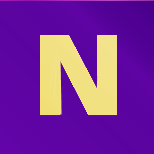As an engineer working in oil and gas operations, your role isn’t just about keeping the process running — it’s also about ensuring every piece of equipment runs safely. And when it comes to Fired Heaters, that responsibility becomes even more critical.
Fired heaters are essential for refining processes, but they also involve high temperatures, pressurized systems, and flammable materials — a combination that demands respect and precision. Whether you’re in charge of design, operation, or maintenance, understanding your role in safety can prevent small oversights from becoming costly disasters.
Many engineers enter the field with technical knowledge, but real confidence comes from knowing how to recognize risks and respond appropriately — something that only experience and targeted training can fully provide.
If you’ve worked long enough around fired heaters, you know things don’t always go according to plan. Burners may misfire, tubes might overheat, or refractory linings could degrade. Even a minor deviation in air-fuel ratio can lead to dangerous combustion conditions.
Some common fired heater hazards include:
Flame impingement and tube overheating
Coking and hot spots from poor heat distribution
Improper burner operation or flame instability
Leaks due to poor weld integrity or corrosion
But here’s the good news — most of these issues are preventable. By implementing routine inspection protocols, monitoring flame patterns, and ensuring proper maintenance schedules, many incidents can be avoided.
The key is to know what to look for and why it matters. That kind of judgment can’t come from guesswork — it requires training grounded in field-proven techniques and expert insights.
To help you stay sharp and proactive in fired heater safety, here are several practices you can apply starting today:
Always verify burner performance before startup A clean, stable flame reduces the risk of tube overheating or incomplete combustion.
Inspect refractory linings regularly Damaged linings can expose tubes to direct flame, increasing the chance of rupture.
Monitor stack temperature trends Rising temperatures may indicate coking or fouling — a red flag for maintenance.
Perform combustion analysis frequently Optimizing air-fuel ratios not only improves efficiency but also minimizes safety risks.
Stay updated on standards like API 560 and NFPA 85 These provide essential guidelines for design and safe operation.
While these tips are valuable, the real challenge is knowing how to apply them correctly in dynamic, high-pressure environments — especially when you’re facing time constraints or unexpected system behavior.
This is where the right training becomes a game-changer.
Joining a specialized Fired Heaters training course with PetroSync gives you a structured, hands-on understanding of heater safety, from design principles to emergency response.
At PetroSync, you’ll gain:
Real-world case studies from refinery operations
Interactive modules taught by seasoned industry experts
Tools to identify, assess, and mitigate operational risks
Confidence to make informed decisions under pressure
If you’re serious about your growth as a technical professional and want to ensure you’re not just doing the job — but doing it right — PetroSync’s fired heater training is a solid investment in your future.
(Press Release)
